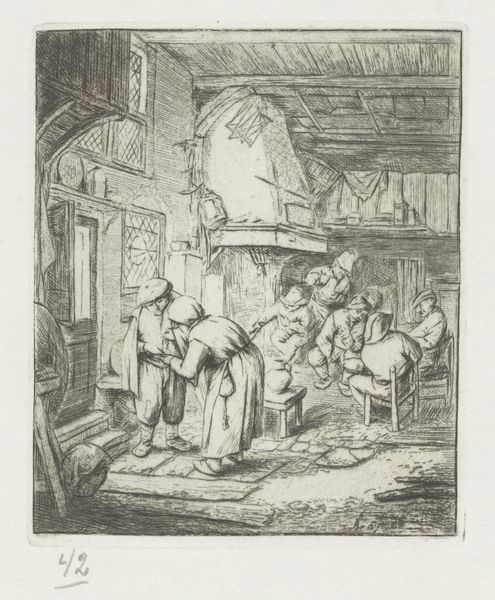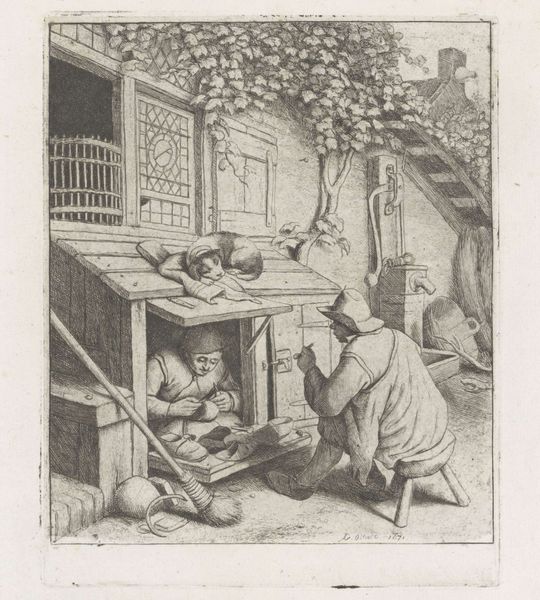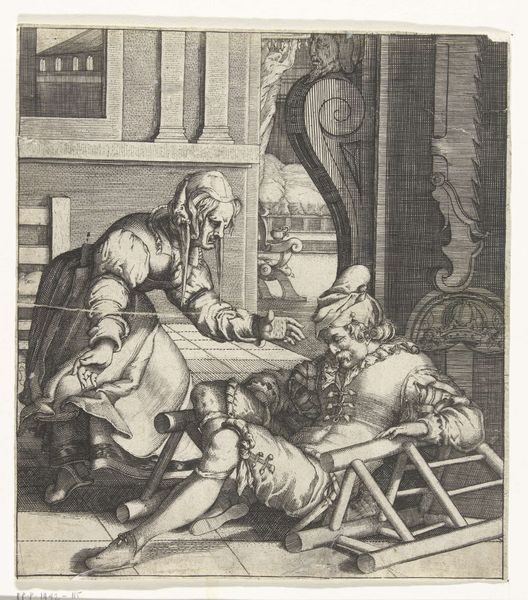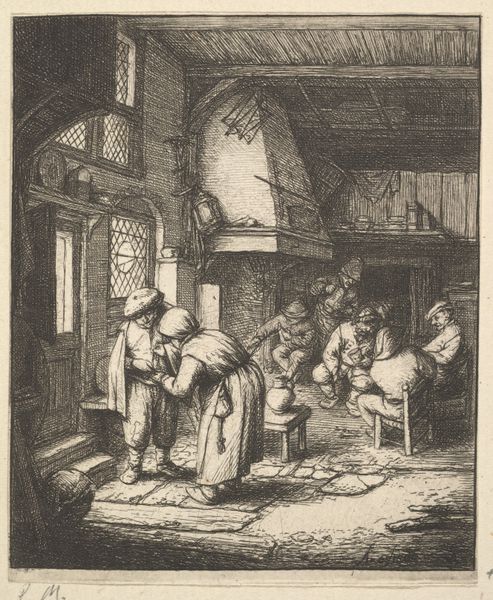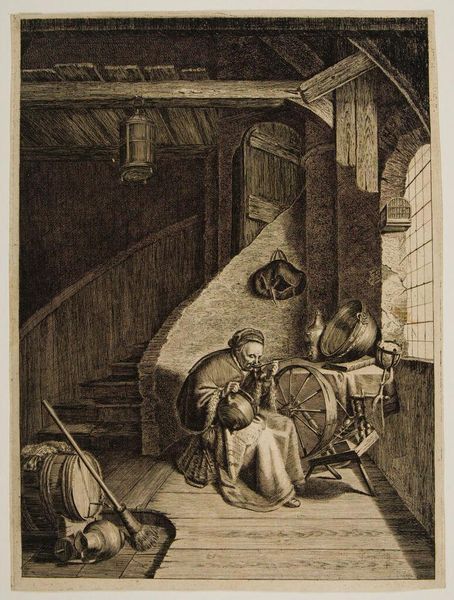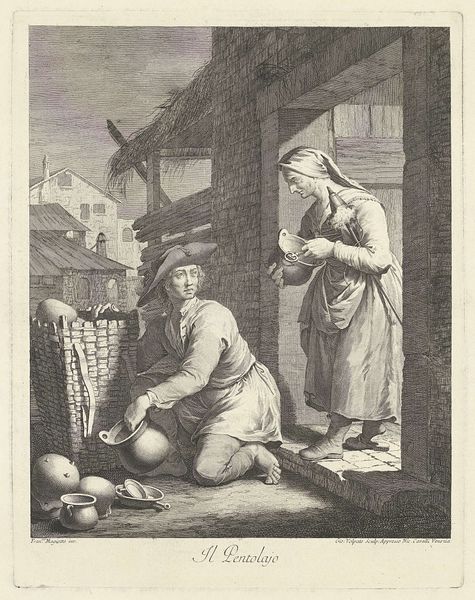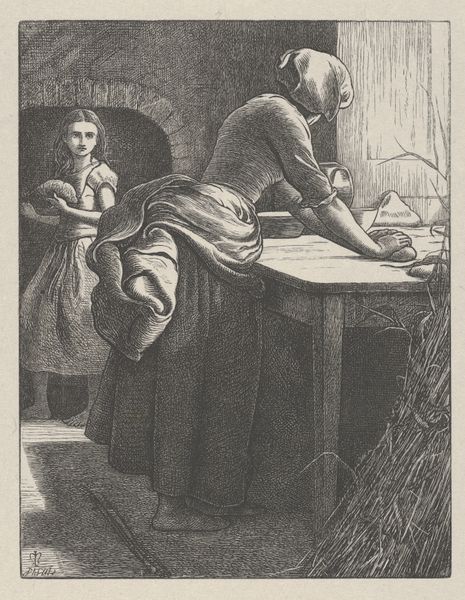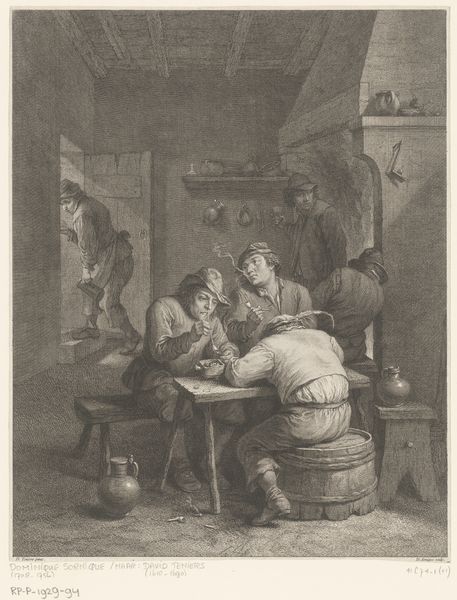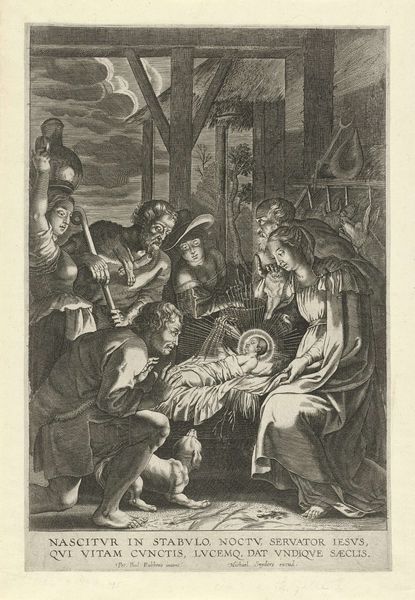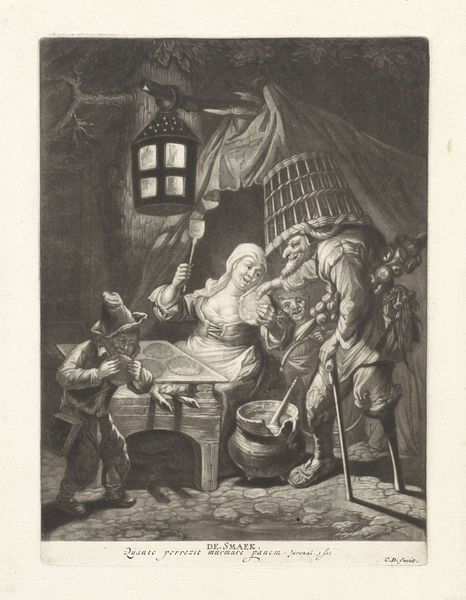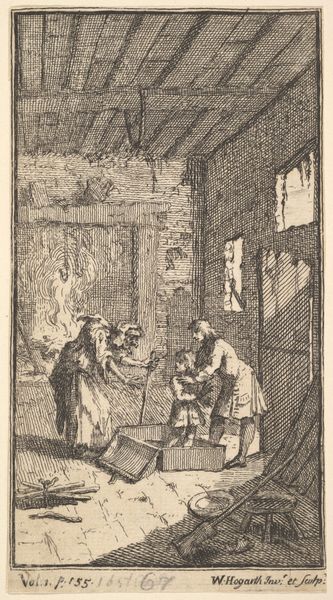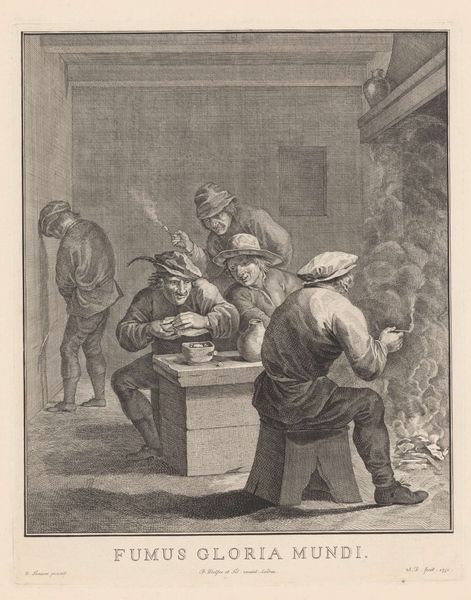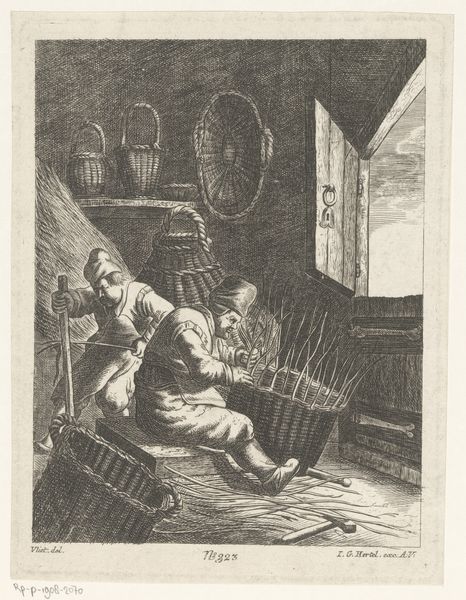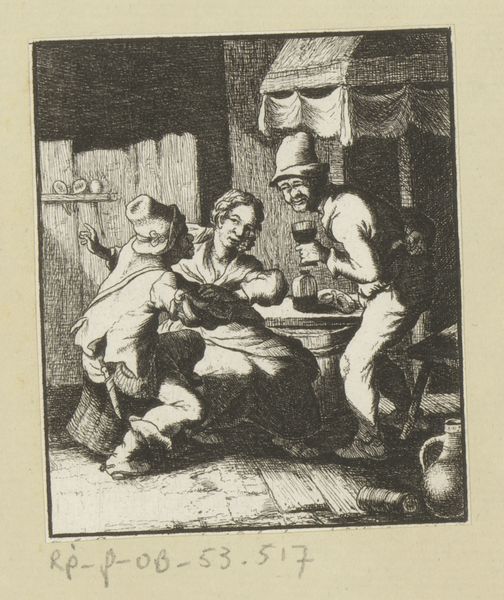
Dimensions: height 374 mm, width 294 mm
Copyright: Rijks Museum: Open Domain
Curator: Right, let’s talk about this rather charming piece entitled "De Bakker," or "The Baker," attributed to Giovanni Volpato, sometime between 1743 and 1803. It’s a print, an engraving to be exact. Editor: Immediately I think, warmth. Even without the colours, there’s something about the scene, all that bread, the fire... it gives off a kind of toasty, comforting vibe. It's got such detail for just a print; is that considered genre painting? Curator: Absolutely. The charm lies in its depiction of everyday life. These genre scenes, and especially prints like this, provided a window into different social classes and occupations for a wider audience, particularly the burgeoning middle class who sought affordable art for their homes. The image romanticizes the work a little too, don't you think? Editor: Definitely idealized! Look how clean those aprons are. Nobody actually looks that picturesque when they’re wrestling with hot dough all day. I love how cramped their workspace looks and I am amazed about all the stuff squeezed into that single space - talk about a long shift at the bakery! But beyond the bread itself, it speaks to labor, the communal aspects of food production and...survival. Is it naive to view that it hints that survival is more intertwined and interdependent than other societal roles? Curator: Not naive at all, because, baked into that very visual, is precisely the social value being created: a recognition of how critical this kind of labour and mutual dependency is for any society's ongoing wellbeing. Notice how that feeling is strengthened too; in that regard, look at how Volpato organized this tableau, positioning these three workers so distinctly along an assembly line. That attention to how these people co-operate for the sake of mass production is rather forward thinking. It even almost resembles the 'staging' we find a century later, doesn't it, with photography? Editor: Exactly! Thinking on that, what stories was this intended to tell or preserve; what slice of life from the 18th-century, was it hoping to capture for audiences then...and today? I bet the patrons it found then weren't bakery tycoons either. It's nice to imagine this sort of work in everyday homes where maybe similar things are cooking and baking. Curator: Perhaps...the genius of Volpato lies not just in its technique but how this print participates in the larger conversation of work and worth. I’ll think of that next time I slice into a loaf. Editor: I love that! Well, next time I pass by the bakery, I'll give them a nod and maybe even bring a print!
Comments
No comments
Be the first to comment and join the conversation on the ultimate creative platform.
